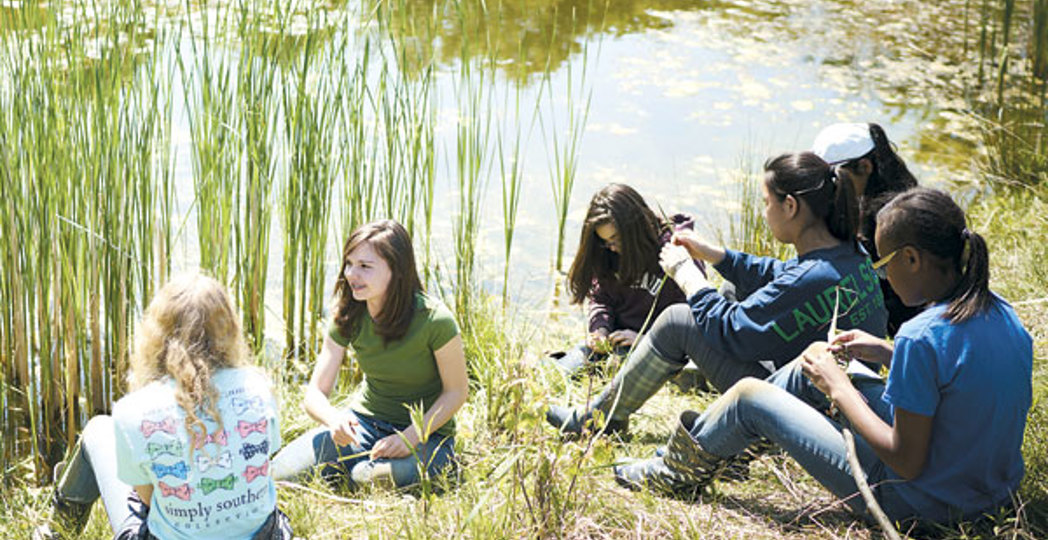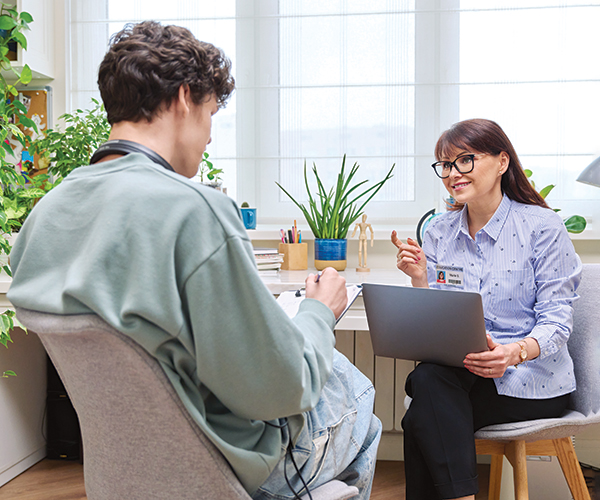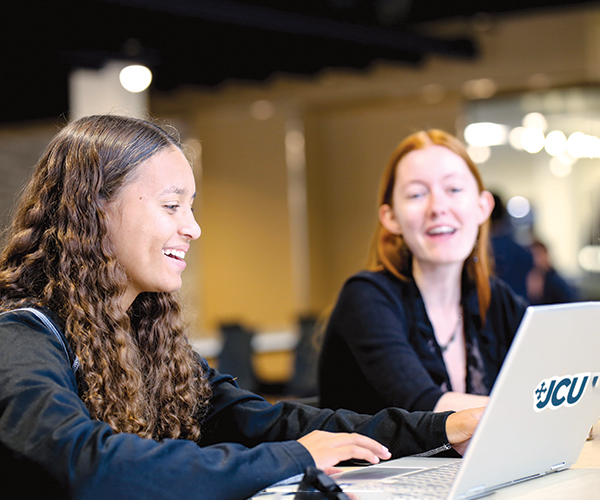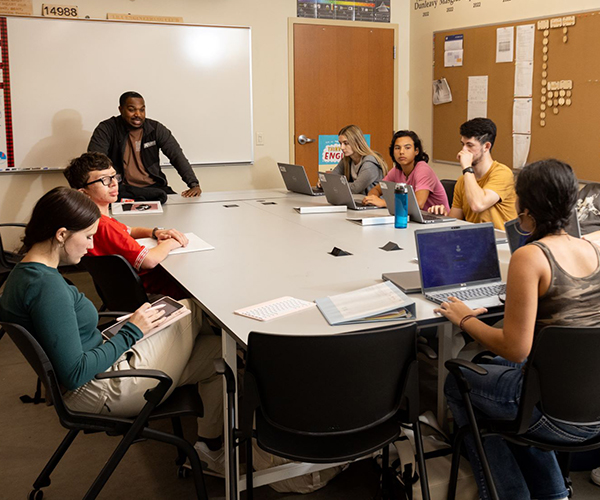The Benefits of Nature-based Learning
by Kristen Hampshire | Mar. 21, 2017 | 1:00 PM

A rumbling preschooler pushes against a log in the woods, rolling it over just enough to get a peek at what’s underneath. A few worms squirm across the worn bark, prompting a peal of laughter: “Look!”
The natural world is alive with spontaneity and unexpected lessons at every turn. Unlike predictable games, the surprises a young learner discovers outdoors promote problem-solving skills, scientific and mathematical exploration, language and preliteracy skills.
Curiosity. Persistence. Creativity. Risk-taking. Resilience.
“The first time children go out into the forest they are tripping over rocks and roots,” describes Audrey Elszasz, founder of Laurel School’s Outdoor Pre-Primary program on its Butler campus (complete with a yurt). “Eventually they are like little billy goats running up and down slippery slopes, coming back to the bus with muddy faces and rosy cheeks.”
Nature-based education has been gradually gaining a foothold throughout the country, especially with early childhood programs that expose toddlers and preschoolers to the wonders of the great outdoors. The value of outdoor learning is not a new discovery. A decade ago, Richard Louv began opening eyes with his best-seller Last Child in the Woods: Saving Our Children from Nature-Deficit Disorder.
Louv argues that we pay a price for a preference for electronics vs. the outdoors: It results in a diminished use of our senses, attention challenges and higher rates of physical and emotional illnesses. With academics being “pushed down” to lower grades to meet Common Core Standards, school days are more rigorous than ever.
But it’s outside that fires up the brain, says Mary Beth Hilborn, early childhood director at Hawken School.
“The natural world is one of the most complex environments a young child will ever navigate,” she points out. “Exploring the natural world with teachers who are planning that navigation is wonderful for children’s brain development.”
Outdoor classrooms and other nature-based learning experiences boost academic performance, according to a study by the American Institutes of Research. Students in outdoor science programs improved their testing scores by 27 percent.
“The best way for children to learn is when they can see it, touch it, taste it, hear it, smell it,” says Abbie Bole, a K-fourth grade science teacher at Laurel School. “That’s what makes an impression on their young minds.”
Inquiry based-learning happens outside. “We’re answering questions with questions: ‘What do you think?’ ” Elszasz says. “Children interact with each other as they try to figure out the answers on their own.”
Children learn critical life skills and school subjects without even realizing it. “They just think they are having fun because the learning is all couched in adventure and exploration,” Elszasz says.
What Nature Teaches Us
The typical early childhood classroom can be quite overstimulating. There are shelves filled with books, educational toys, a fish tank and bulletin boards decorated with vibrant colors and shapes.
At Hawken, Hilborn says, the early childhood classrooms bring nature indoors by using colors and textures found outdoors. Bulletin boards are covered with natural fabric, stones are used for counting instead of plastic pieces.
“Anywhere we can use a natural object safely in the classroom, we have done that,” Hilborn says.
The result: a peaceful classroom. “There is a sweet spot with sensory stimulation where you maximize their thinking and use of their brains without overstimulating them by having too much coming at them — too much screen time, too much change, too much color, too much action,” Hilborn describes.
At Gilmour Academy, preschoolers can romp outside and visit gardens on the property. If there are puddles, kids can jump in.
In 3- to 6-year-old rooms, students plant flower bulbs in the fall and watch the cycle of plant life evolve when sprouts of green crop up in spring. They study the parts of the flowers, bring them indoors and learn how to arrange them.
“They’re feeling the dirt, hearing the birds, seeing what they’re doing, so it’s kind of bringing all of these senses together in their study,” says Randi Russell, who teaches 3- to 6-year-olds at Gilmour.
Students weave natural objects such as flowers and tall grass into a loom in the classroom and create natural artwork. The fenced flower garden is connected to classrooms, so children can go in and out on a whim, while supervised.
An arrangement with Lake Metroparks Farmpark allows Gilmour students to spend several days taking part in activities at the nature preserve. Also, through a relationship with a former student who raises chickens, students collect eggs at the farm, bring them to the classroom to incubate and observe the progress. Even the chicken feed is a lesson.
“We grind that down so children see how they have to work up to eating the big pellets,” says Russell.
The Montessori-style learning promotes questions. When a child asks, “How does this work?” it becomes the lesson of the moment. And outdoors, there is no shortage of material, says Dawn Conforti, who runs the toddler program at Gilmour for children 18-months to 3-years-old.
For this age range, outdoor learning helps promote an explosion of language development, Conforti says. So she captures images of the outdoors and creates a bound book for the classroom. The children make up stories as they look through the pages. “This gets them to continue at home,” she says of passing along the love of nature.
Nature fine-tunes children’s observation skills, says Laura Novotney, who also teaches 3- to 6-year-olds at Gilmour. “Whatever is happening outside at the time becomes a teaching moment,” she says. Children learn to be present. To stop, listen, look around — check in to the world around them.
“We are making an imprint on these children,” Laurel’s Elszasz adds. “They will carry this love of the outdoors and appreciation for nature with them their whole lives.”
Not to mention, the outdoors gives children an opportunity to expend energy and get the sillies out. “If you put a child that’s having a hard time in a classroom outdoors, it changes everything,” Elszazs says. “It can really develop their self-confidence, and we can help develop who they are as a person without squashing their energy.”
Get Outside — and Learn Something New
Nature learning can continue at home on the weekends and during breaks.
How can you inspire a young learner at home to embrace Mother Nature — or, at the very least, get some mud on their boots? Start by exploring your backyard. Talk about the colors you see, the shapes, the animals.
Not sure what that is? Take a picture and look up the answer when you go indoors.
When the backyard gets to be too limiting, geocaching can open up new worlds of exploration. Essentially an outdoor treasure hunt using a GPS, it’s easy to register online (geocaching.com) and find hidden caches near you. The rule is: Take something from the cache and leave a trinket for another person to find. So bring small tokens along — a coin, a marble, a little figure, any sort of gumball machine-type surprise.
Or if you just want to explore, there are hundreds of miles of trails to hike in the Cleveland Metroparks (you can map a trail by downloading their app).
“Get out and dig in the dirt, just explore the wonders you can find if you take a walk through the woods and interact with nature,” Hilborn encourages. “Rain is really fun. The elements are exciting and not something to shy away from.”
Trending
-
1
-
2
-
3
-
4
-
5










